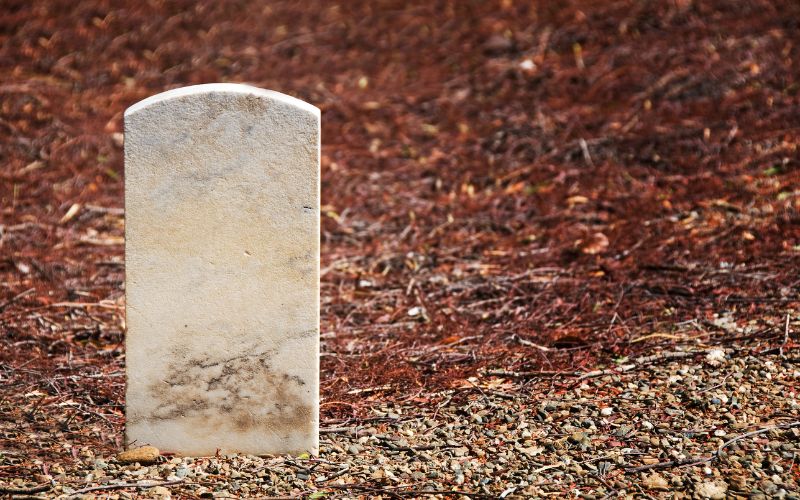
- Details
- By Elyse Wild
A 2022 study by the Centers for Disease Prevention and Control made headlines for revealing that Native Americans die on average 6.5 years younger than the general population. But new research shows that the life expectancy gap is likely much larger.
Published last week in the Journal of the American Medical Association, the study found racial misclassification on death certificates has effectively skewed data and erased Native people from vital statistics. When researchers compared racial identification on death certificates with self-identification of the deceased, they found that 41% of Native Americans who died had something else written on their death certificates.
The implications are staggering: Once corrected for misclassification, the life expectancy gap is 2.9 times larger than routine vital statistics suggest. During the study period from 2008 to 2019, the gap doubled from 4.1 years to eight years.
Native News Online spoke with two of the researchers behind the study: Michael Bird, a member of Kewa Pueblo who spent 20 years with the Indian Health Service, and Jacob Bor, whose research focuses on health inequities. This interview has been edited for length and clarity.
Native News Online: How did you get involved in this research?
Michael Bird: I'm 73 years old, so I've been around the block a few times. I started out in social work and spent 20 years with the Indian Health Service, where I failed as a bureaucrat, which was the best thing that could have happened to me.
My first real work experience was doing medical social work at Santa Fe Indian Hospital, serving 12 tribes, including my two home communities. That was foundational because I saw anything and everything that came through the door. It was challenging work, and it was coupled with my own personal history — my father was an alcoholic, and several of his brothers had issues with alcohol as well.
When I worked at the hospital, I saw many families disrupted by alcohol and drug abuse, so I knew firsthand what our communities were facing.
Jacob Bor: I have personal and professional entry points into this work. I have a Native American son—he's 12 years old and is Taíno. That's been a journey for me to learn about what that has meant for each of them to have contact with the broad diversity of Native cultures.
Professionally, I've had a long-standing research agenda to understand health inequities in the US between different populations, trying to understand the structural and historical causes of those health disparities. I had come across work showing the underreporting of mortality rates for American Indian Alaska Native populations, and my co-authors and I noticed an opportunity with a census study where they followed up a nationally representative cohort in death records.
Were you surprised by the study's findings about racial misclassification on death certificates?
Bird: No, it doesn't surprise me at all. When it comes to public health and Indians, this kind of thing doesn't surprise me. It makes me sad and angry.
This is extremely important for Native people, our communities, and our tribes. I would hope it's important to all non-Native people too, because why are the first Americans the last Americans?
Bor: There were three things. First was the extent of underreporting: 41% of Native Americans who died had something else written — some other race or ethnicity — on their death certificate. It was substantially higher for people who reported as American Indian/Alaska Native plus another race.
The rate of misreporting was even higher for them. Just the scale of the underreporting problem—this is not something that's likely to be addressed by just training funeral directors. We really need different methods—cohort-based, longitudinal methods to better understand mortality patterns in this population.
The second surprise was the scale of the implications. The gap in life expectancy was almost three times larger than it appears in routine vital statistics.
The third thing was the widening of the gap over time. During the study period, the gap increased 4.1 years to eight years between 2008 and 2019. We are in the midst of a real-life expectancy crisis for Native people.
The study found that the Native race was most frequently underreported for heart disease and cancer deaths, but less frequently for deaths from violence, drugs, and alcohol. Why do you think that is?
Bird: One question is: why are Native people misclassified? I was talking to a friend about this — many tribes, including mine, issue tribal ID cards for members. One simple thing would be to ensure all Native people had a Native ID so that when they pass, whoever is handling the body could at least have some source of identifying the person as a tribal member.
Bor: I think there are two things going on there. One is that underreporting and racial misreporting on death certificates is more common for older people. For younger people, there's often someone else there — a family member, or someone to say what the correct race/ethnicity of the deceased would be. That's much less likely for someone who is older.
The other issue that could be going on — and this is speculation — is that there could be stigma involved. The stigmatizing trope of alcohol problems being prevalent in Native populations means there might be more readiness to code someone as Native American for those types of deaths. But I want to be clear, this is speculation—we didn't interview funeral directors about their perceptions.
Tell me about the concept of "historical determinants of health.”
Bird: You're probably familiar with social determinants of health—the concept coined by Sir Michael Marmot about 30-40 years ago. It identifies factors in society that create health: education, economy, access to food and water, and housing.
It's a good concept, but I felt it was limited for certain communities, particularly the disadvantaged and marginalized. American Indians have the worst mortality and morbidity rates of any population in this nation on any social measure you look at.
We've coined the phrase “historical determinants of health.” Native people in the Americas have had a very different experience from everyone else, going back to genocide, the introduction of infectious diseases, theft of native land, and alienation of native people from their land and ability to provide for their tribes and communities.
If you analyze things just with social determinants of health, it doesn't address the real underlying factors that created those conditions.
Why is numerical data important for legitimizing Native experiences to non-Native communities?
Bird: Because of the size of our population relative to other communities, I think our message doesn't get the attention it deserves.
Stories are data in Native culture, but having numerical data creates a shared reality that bridges what Native communities are experiencing and how the rest of the world acknowledges it as truth. Without hard numbers, people often don't acknowledge the realities Native people face.
As someone who has reported extensively on the overdose crisis in Native communities, I've found that what I see and feel in communities is never reflected in the data. Does this resonate?
Bird: Welcome to my world. That's exactly the problem we're addressing. The data consistently underrepresents what's actually happening in our communities.
When Native people are misclassified on death certificates, we're literally being erased from vital statistics. These are unmarked statistical graves—our people are dying, but they're not being counted as Native deaths.
Bor: As a quantitative researcher, I believe those stories are there in the data. When they don't look like they're there, sometimes it's because the data aren't very good, and that's what this study is about.
There's this very real but hidden story—the statistical erasure of these deaths. We're kind of enumerating the statistical unmarked graves. These are people who die, but they're not being identified as Native in the data.
We hope that this effort to count the uncounted addresses this issue of statistical erasure in vital statistics.
What are the practical implications of this massive underreporting of Native identity in deaths?
Bor: The biggest point is that these health gaps are underappreciated, and therefore, there's a rationale for much greater investment in public dollars supporting the health of Native populations. These gaps are large and seem to even be increasing.
Going forward, the underreporting is so large in death certificates that it's really hard to rely on racial identification on death certificates for population health surveillance. Further linkages like were done for this study would be a really good idea, and that could include collaborations with specific tribes.
More Stories Like This
The Indian Health Service Is Flagging Vaccine-Related Speech. Doctors Say They’re Being Censored.Indian Health Service to Open Office for Indian Veterans Support
Indian Health Service Joint Venture Construction Program Selects New Projects
New Mexico Could Be First State to Address Forced Sterilization of Native American Women
Seattle Indian Health Board Receives Global Award to Advance Women’s Health

